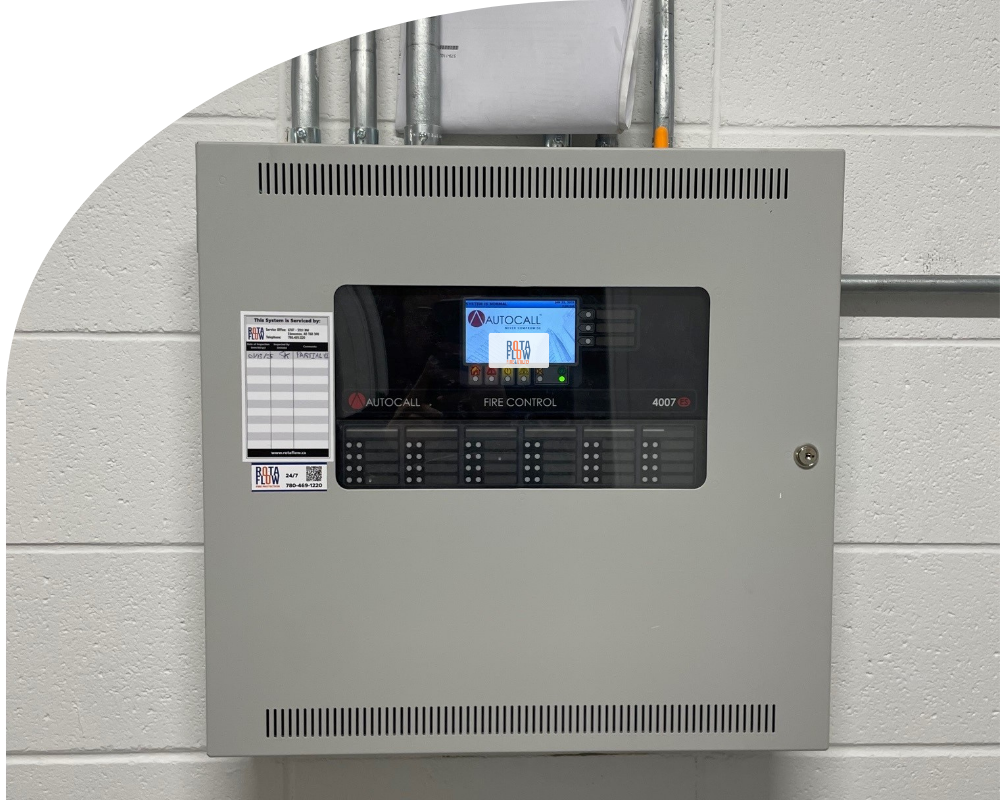CAN/ULC-S1001: Ensuring Integrated Fire & Life Safety
CAN/ULC-S1001 is the Canadian standard for verifying and documenting the integration of fire protection and life safety systems. It ensures all interconnected systems operate cohesively during emergencies, protecting occupants and maintaining compliance.
Integrated systems testing is required for new constructions before occupancy, after modifications that affect safety systems, and at regular intervals—one year after the initial test and every five years thereafter. A certified Integrated Testing Coordinator (ITC) is responsible for planning, executing, and documenting the process to meet regulatory standards.
The Integrated Testing Report includes a comprehensive plan, recorded test results, repeat examinations if necessary, and all required compliance documentation. This report is provided to building owners, regulatory authorities, and on-site maintenance personnel to ensure ongoing system reliability.
Critical systems requiring testing include fire alarms, automatic sprinklers, emergency power, smoke control, elevator recall, and emergency lighting. Coordinated testing verifies their proper function in emergencies, ensuring the safety and compliance of the building.
Adhering to CAN/ULC-S1001 guarantees that fire and life safety systems function as an integrated unit, minimizing risks and meeting regulatory requirements.

Contact Us
Please note that all forms and emails will be replied to within 24 hours. For immediate assistance, call 780-469-1220.
FAQ
Question - When is the CAN/ULC-S1001 testing required?
Answer -The National Building Code 2015 (NBC 2015) and CAN/ULC-S1001 both stipulate that when integrated fire protection and/or life safety systems are built or affected by work, integrated systems testing is necessary. It is necessary to produce an acceptable Integrated Testing Report.
Before the building permit is closed or before permission to occupy is given.
A continuing operational requirement of the National Fire Code 2015 (NFC 2015) is integrated systems testing. The schedules for this continuous testing are provided by CAN/ULC-S1001. Building owners are in for of making sure that acceptable Integrated Testing Reports are maintained on file, made available on the construction site, and delivered to the Fire Department upon request.
Question - Who can perform the Integrated Systems Testing?
Answer – An Integrated Testing Coordinator is in charge of creating and carrying out the Integrated Testing Plan in accordance with CAN/ULC-S1001. This person should be knowledgeable about:
- Standards and codes for diverse systems
- The systems’ standard and emergency modes of operation
- Checking the systems’ performance
All licences and certificates necessary by contractual commitments, federal, provincial, and other legislation (such as municipal regulations) must be held by the integrated testing coordinator.
Question - What information is required in the Integrated Testing Report?
Answer- The Integrated Testing Report must contain every piece of documentation mentioned in CAN/ULC-S1001’s Subsection 7.3. This comprises:
- The Integrated Testing Plan
- Forms for Integrated Testing
- Integrated Test Forms for Repeat Examinations
- The paperwork needed by Section 5.3
Note – An example Integrated Testing Plan is provided in Appendix C of “CAN/ULC-S1001-11-REV1”, which can be seen for free (user account required) at www.shopulstandards.com.
To help in identifying the documentation needed in the Integrated Testing Report, an example checklist has been given as an Appendix to this advice.
Question - Who shall receive the Integrated Testing Report?
Answer – The following parties must receive the Integrated Testing Report:
- Building proprietor
- City (upon request from Fire & Protective Services or Building Standards). Depending on the city’s requirement.
- Upkeep on the construction site
Code References
Both NBC 2015 and NFC 2015 require testing in accordance with CAN/ULC-S1001, “Integrated Systems Testing of Fire Protection and Life Safety Systems”, if there are fire protection systems and life safety systems that need to be integrated with one another. To guarantee that everyone Systems are examined “as a whole” to ensure that they work well together. Below are references from NBC 2015 and NFC 2015:
- This is stated in NBC 2015, Division B, sentences 3.2.9.1.(1) and 9.10.1.2.(1).When fire protection and life safety systems, as well as systems with fire protection and life safety functions, are integrated with one another, they must be tested as a whole in accordance with CAN/ULC-S1001, “Integrated Systems Testing of Fire Protection and Life Safety Systems,” to ensure that they have been properly integrated.
This is stated in NFC 2015, Division B, Sentence 6.8.1.1.(1): According to CAN/ULC-S1001, “Integrated Systems Testing of Fire Protections and Life Safety Systems,” interconnections between fire protection and life safety systems must be tested and maintained.
Examples from CAN/ULC-S1001 of Systems that Require Integrated Testing
- Emergency generators (e.g. startup test, loss of power simulations)
- A/V and lighting control systems
- Notification systems
- Sprinkler systems
- Standpipe systems
- Fire pumps
- Transmissions with fire signal receiving center (e.g. receipt of signals)
- Mass notification systems
- Elevators (e.g. proper recall)
- Emergency pressurization systems
- Smoke exhaust systems
- Hazardous Protection monitoring
- Smoke alarms
- Cooking equipment fire suppression systems (release of agent not required)
- Hold open devices (each door tested to ensure returns to closed and latched position)
- Electromagnetic locks (each must de-energize)
- Smoke control systems
- Water supplies (test responses to pressure sensors, level sensors, etc.)
- Water supply control valves
- Freeze Protection Systems
- Fixed fire suppression systems (release of suppression agent not required)

